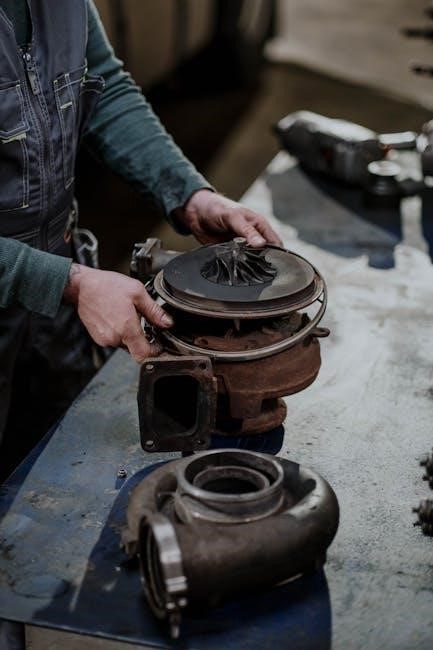Andersen hitch torque specs are crucial for safe installation, with detailed PDF guides available online for reference and proper torque wrench usage, ensuring accuracy and security.
General Information About Andersen Hitch
Andersen hitch is a type of fifth wheel hitch designed for towing trailers, it provides a safe and secure connection between the truck and trailer. The hitch is known for its unique design and ease of use, making it a popular choice among truck owners. The Andersen hitch is designed to work with a variety of trucks and trailers, and is available in different models to suit different needs. It is made from high-quality materials and is built to last, with a durable construction that can withstand heavy use. The hitch is also designed to be easy to install and remove, making it a convenient option for those who need to frequently switch between different trailers. Overall, the Andersen hitch is a reliable and efficient towing solution that is well-suited for a variety of applications, including recreational and commercial use, with its features and benefits making it a top choice for many truck owners;
Understanding the Importance of Torque Specs
Torque specs are a critical aspect of installing and maintaining an Andersen hitch, as they ensure that all components are properly secured and functioning as intended. The torque specs provide a specific tightening sequence and torque value for each bolt and screw, which helps to prevent damage to the hitch and surrounding components. Properly torqued bolts and screws also help to prevent loose connections, which can lead to reduced performance and safety issues. Additionally, following the recommended torque specs can help to extend the life of the hitch and reduce the need for costly repairs. By understanding the importance of torque specs, users can ensure a safe and reliable towing experience, and avoid potential problems down the road. The torque specs are typically provided in the owner’s manual or on the manufacturer’s website, and should be carefully followed to ensure proper installation and maintenance of the Andersen hitch.

Andersen Hitch Torque Specs Requirements
Andersen hitch requires specific torque specs for proper installation and safety, with detailed requirements outlined in the manual for user reference and guidance always.
Kingpin Coupler Set Screws Torque Specs

The kingpin coupler set screws torque specs are a critical component of the Andersen hitch installation process. According to the manual, the four kingpin coupler set screws need to be torqued to 40 ft. lbs. This is a specific requirement that must be followed to ensure proper installation and safety. The kingpin coupler must also be centered on the pin box before being torqued down. This information is outlined in the manual, which provides detailed guidance for users. The manual is an essential resource for anyone installing an Andersen hitch, as it provides specific torque specs and other important installation details. By following the instructions outlined in the manual, users can ensure that their Andersen hitch is installed correctly and safely. The kingpin coupler set screws torque specs are just one aspect of the installation process, but they are a crucial one. Proper torque is essential for ensuring the safety and security of the hitch.
Draw-Tite Max-Frame Trailer Hitch Receiver Torque Specs
The Draw-Tite Max-Frame Trailer Hitch Receiver requires specific torque specs for installation. According to the instructions, all hardware must be torqued to 68 foot pounds. This is a critical requirement for ensuring the safe and proper installation of the hitch. The instructions provide detailed guidance on the installation process, including the torque specs for the hardware. A photo and video are also available to provide additional guidance and support. The Draw-Tite Max-Frame Trailer Hitch Receiver is a custom fit class III hitch, and the torque specs are specific to this model. It is essential to follow the instructions carefully to ensure that the hitch is installed correctly and safely. The torque specs are a crucial aspect of the installation process, and users must ensure that they are followed accurately to avoid any potential safety risks. By following the instructions and torque specs, users can ensure a safe and successful installation.

Installation and Adjustment of Andersen Hitch
Proper installation and adjustment of Andersen hitch ensures safety and security, following manufacturer guidelines and torque specs for a successful setup and operation, every time, correctly.
Pin and Clip the Hitch to Gooseneck Ball
To ensure a secure connection, pin and clip the hitch to the gooseneck ball, following the manufacturer’s instructions for the Andersen hitch. This step is crucial for safety and preventing accidents. The pin and clip system provides a reliable and stable attachment, allowing for smooth towing and minimizing the risk of detachment. It is essential to double-check that the pin and clip are properly engaged and secured to the gooseneck ball, as specified in the Andersen hitch torque specs PDF. By following these guidelines, users can confidently tow their trailers, knowing that the hitch is securely attached to the gooseneck ball. Properly pinning and clipping the hitch to the gooseneck ball is a critical step in the installation process, and it requires attention to detail and adherence to the manufacturer’s recommendations. The Andersen hitch torque specs PDF provides detailed instructions and guidelines for this step.
Tightening the Top Bolt and Jamb Bolts
Tightening the top bolt and jamb bolts is a critical step in the installation process of the Andersen hitch. According to the manufacturer’s instructions, the top bolt should be tightened to 70 ft-lbs, instead of the initial 60 ft-lbs. The lower two jamb bolts should not be tightened yet, as this may cause issues with the hitch’s alignment; Once the weight of the trailer is on the hitch and it is latched to the elevated ball on the base, the top bolt should be re-tightened to 70 ft-lbs to remove any flex in the bed or bedliner of the truck. This ensures a secure and stable connection between the hitch and the trailer. The Andersen hitch torque specs PDF provides detailed guidelines for tightening the top bolt and jamb bolts, and it is essential to follow these instructions carefully to ensure a safe and proper installation. By tightening the top bolt and jamb bolts according to the manufacturer’s specifications, users can ensure a reliable and secure connection.

Additional Considerations for Andersen Hitch
Proper installation and maintenance are crucial for Andersen hitch, with factors like weight and torque specs affecting performance and safety, requiring careful consideration and attention to detail always.
Weight of the Trailer on the Hitch
The weight of the trailer on the hitch is a critical factor to consider when installing and using an Andersen hitch; According to the manufacturer’s instructions, the weight of the trailer should be taken into account when tightening the top bolt and jamb bolts. The instructions recommend putting the weight of the trailer on the hitch and latching the hitch to the elevated ball on the base before re-tightening the top bolt to remove any flex. This step is essential to ensure a secure and stable connection between the trailer and the hitch. The weight of the trailer can affect the torque specs and the overall performance of the hitch, so it is crucial to follow the manufacturer’s guidelines. By considering the weight of the trailer, users can ensure a safe and reliable towing experience with their Andersen hitch. Proper installation and maintenance are key to preventing accidents and ensuring a smooth ride.
Re-Tightening the Top Bolt for Flex Removal
Re-tightening the top bolt is a crucial step in the installation process of an Andersen hitch, as it helps to remove any flex that may be present in the bed or bedliner of the truck. The manufacturer’s instructions recommend re-tightening the top bolt to 70 ft-lbs to ensure a secure and stable connection. This step is essential to prevent any movement or shifting of the hitch during towing, which can cause accidents or damage to the vehicle or trailer. By re-tightening the top bolt, users can ensure that the hitch is properly seated and secured, providing a safe and reliable towing experience. The process of re-tightening the top bolt should be done carefully and in accordance with the manufacturer’s guidelines to avoid over-tightening or under-tightening, which can affect the performance of the hitch. Proper re-tightening of the top bolt is vital for optimal hitch performance and safety. Regular maintenance and inspection of the hitch are also necessary to ensure continued safe and reliable use.
Using a Torque Wrench for Andersen Hitch Installation
Using a torque wrench is essential for Andersen hitch installation, as it ensures that the bolts and screws are tightened to the correct specification. A torque wrench is a tool that measures the rotational force applied to a bolt or screw, allowing users to tighten it to the recommended torque specification. The manufacturer’s instructions provide detailed torque specifications for each bolt and screw, and using a torque wrench helps to prevent over-tightening or under-tightening. Over-tightening can damage the threads or strip the screws, while under-tightening can lead to loose connections and safety hazards. By using a torque wrench, users can ensure that the hitch is installed correctly and safely, providing a reliable and secure connection between the vehicle and trailer. The torque wrench should be calibrated regularly to ensure accuracy, and users should follow the manufacturer’s guidelines for proper use and maintenance. Proper use of a torque wrench is critical for a successful installation.










